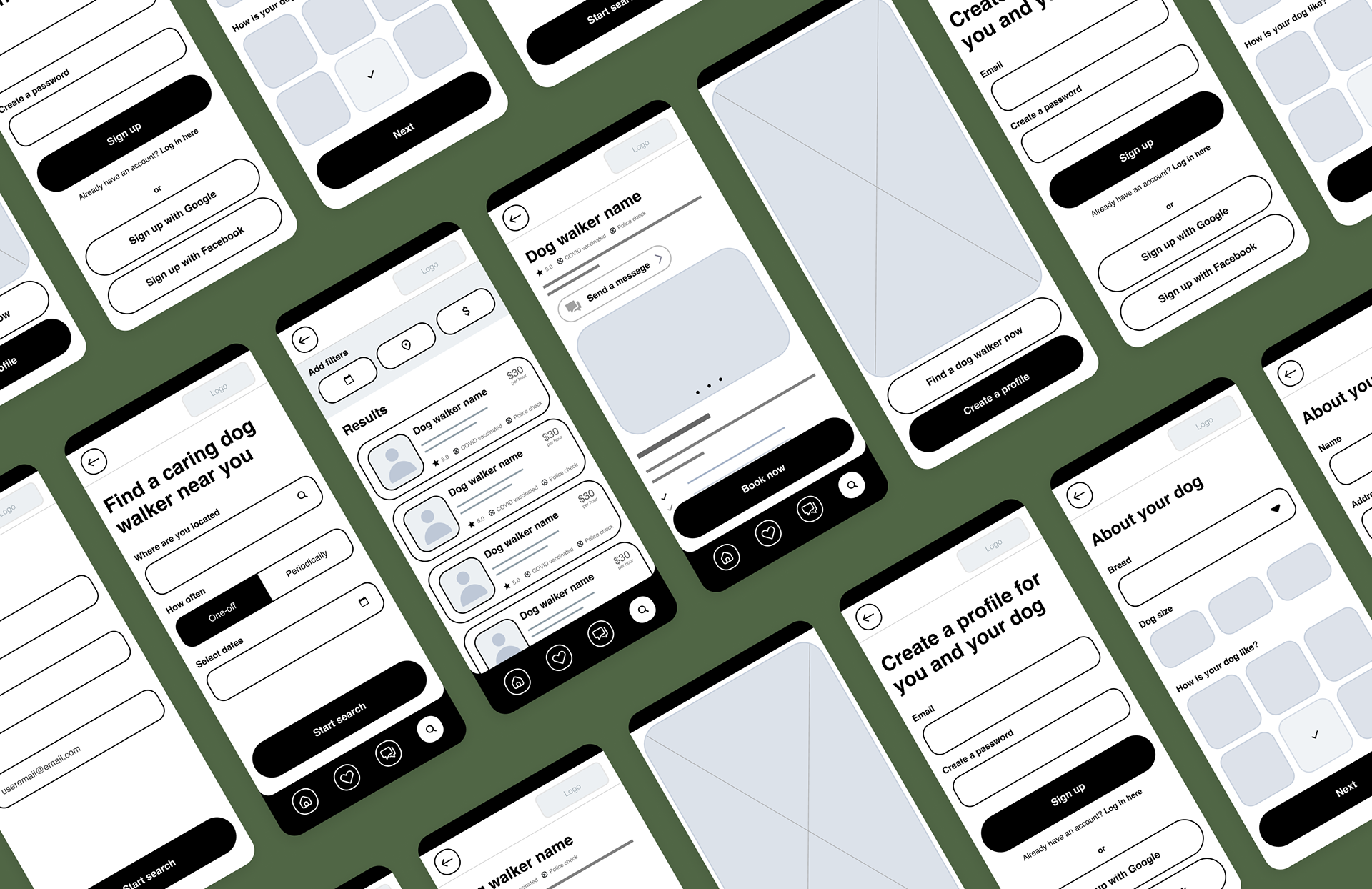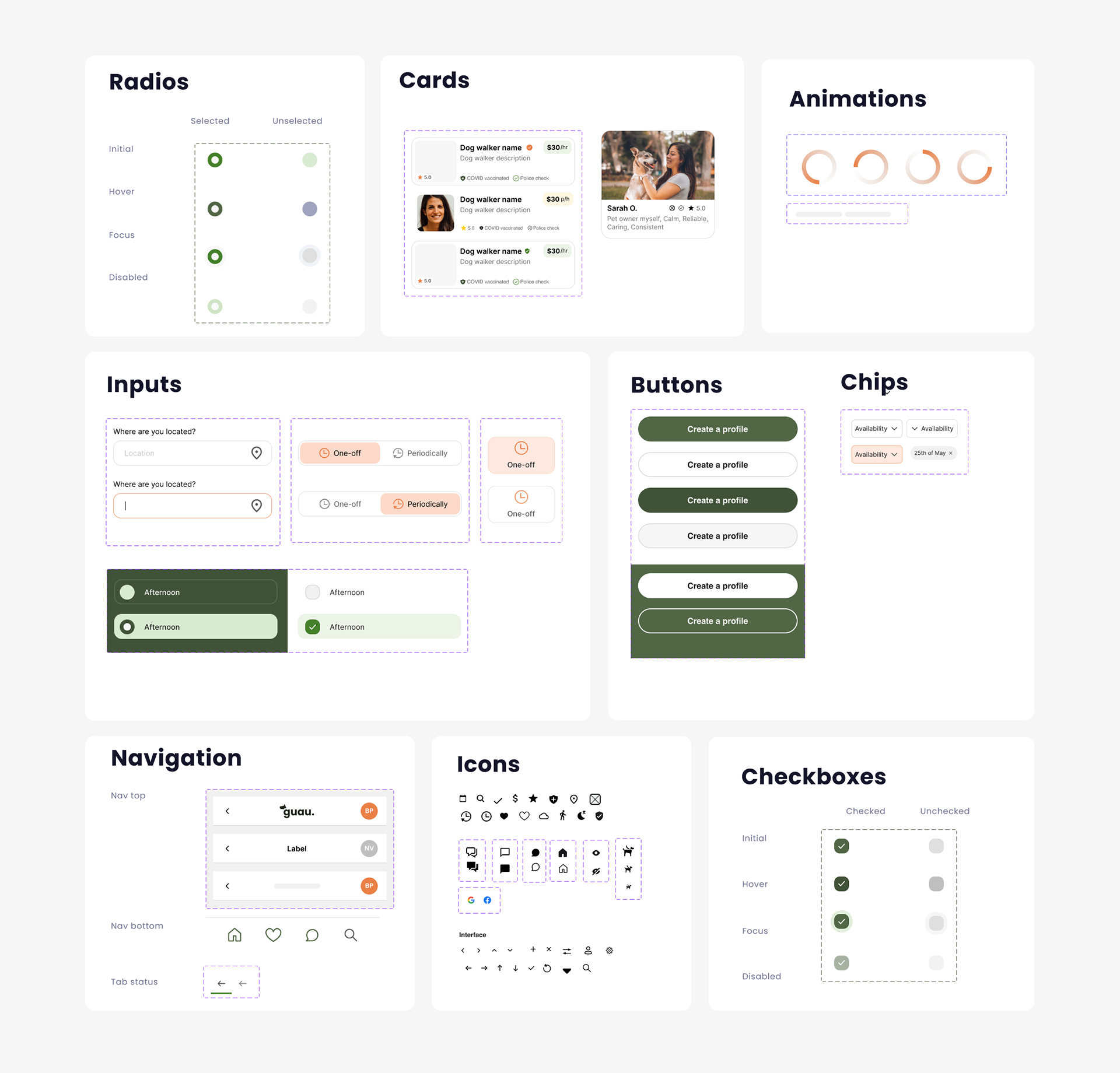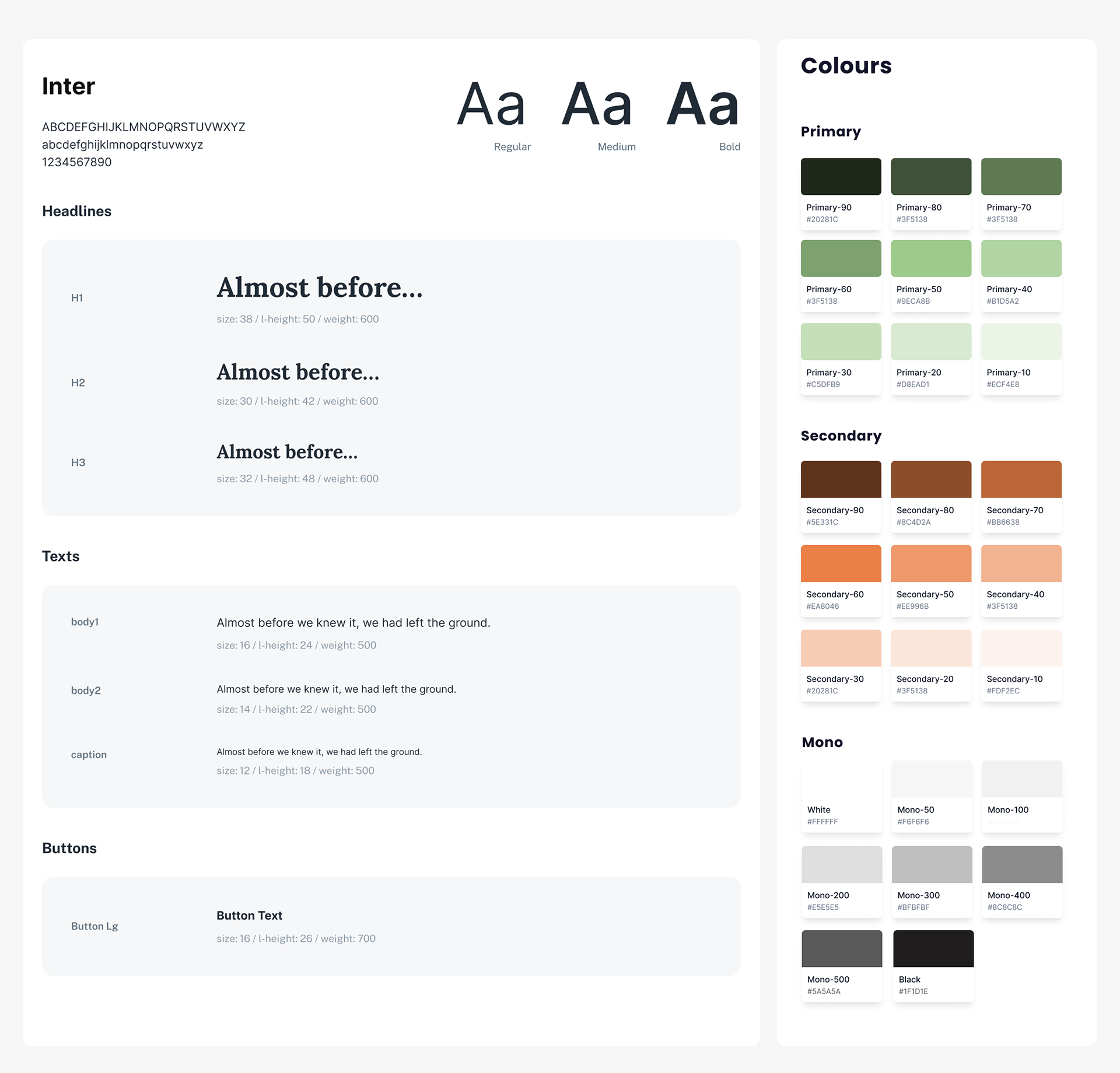Background and context
After working as a Senior Graphic Designer in a tech organisation, I shifted my focus to product design. Although I was already working on product teams and gaining valuable experience on various projects, I wanted to receive mentorship as a product designer to validate my learnings and gain a comprehensive understanding of UX and UI practices worldwide. This project created as was part of a Product Designer certificate program at Dribbble.
Now, let's talk about the project
This service is for busy dog owners who find it hard to find someone to take their dog for a walk while they are working or when they are away. They want someone reliable and caring, and they want to find them quickly.
Objective
• Create a digital service to connect dog owners with dog walkers that bring value for both users.
Research
The research aimed to identify pain points for the Dog owner's journey and create a minimum viable solution.
To start designing a product solution, my research was based on:
• User interviews: Recruiting people I knew as potential app users to interview them.
• Market research: Document the solutions and features of existing products that deliver the same or similar solutions.
The information collected in this research was the starting point I needed to begin the design process and put together solutions to test my assumptions with them later.
User interviews
I conducted interviews with both dog owners and dog walkers to better understand their expectations. This allowed me to identify what dog owners are seeking in a platform and what dog walkers require before accepting a booking request.
Dog owners' interview insights:
• When unable to take their dogs for a walk, they rely on family or friends for help.
• As a dog owner, it is important to find dog walkers who are responsible and punctual and do not cancel at the last minute.
Market research
A comparison of features and services between the leading dog walking booking platforms in Australia, where I focused on these business areas:
• Services
• Platform
• Content
• Design
The product
Wireframes and usability testing
At this point, the wireframes only highlight the primary user tasks and contain minimal details. My focus was primarily on functionality rather than the final product's UI. My goal was to ensure that the essential aspects were functional.
Conducting usability testing during the wireframing stage was vital for validating the user flow I created in earlier stages.
User interview task: Find and request a booking time with a dog walker


Findings
During the flow testing, the user's feedback led me to revise my ideas and assumptions about availability, interactions with dog walkers, and understanding the criteria behind choosing the right dog walker.
1. Availability was unclear: The user didn't feel confident about making a booking because they weren't sure if the dog walker was available.
• Changes: Add a range of time available before the search results and in the filters menu.
2. Find better ways to interact with the dog walker: The user didn’t consider messaging the dog walker unless necessary.
• Changes: Request a booking CTA was added, followed by an automated message in the chat between the dog owner and the dog walker.
3. They prefer to find a dog walker for the long term: The user would prefer to have a recurring dog walker rather than change for a new one every time.
• Changes: Add a reviews section within the dog walker profile.
Visual design
Design System
A basic design system was created to give visual consistency, where colour and typography styles were defined, as well as the main components to cover the fundamental user interface elements of this flow.


Prototype
Try the user flow below.
Please note this is a prototype and not all buttons are actionable.


